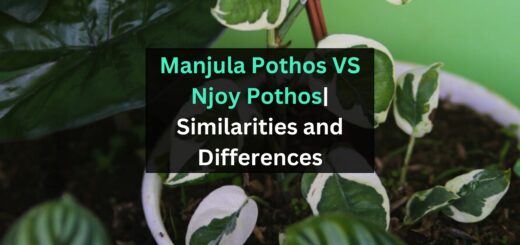How to use Self-Watering Bulbs? – How long do Watering Globes last?
How to use Self-Watering Bulbs? – How long do Watering Globes last? Have you ever questioned the effectiveness of those lovely glass self-watering globes? Self-watering globes are an excellent technique to ensure that your indoor flowering bulbs have enough moisture if you are worried about their water needs while you are away on vacation.
Quick takeaways:
- After the globe has been flooded with water, invert it, and bury the neck in the earth.
- The rate at which the water can escape is slowed down by two variables.
- First, the dirt at the spike’s mouth will impede the water’s flow, and second, as the water percolates out, a weak suction is formed inside the globe, preventing further water evaporation.
- More water escapes when the soil eventually dries out since air can now enter again.
Whether you’re growing giant amaryllis, a pot of hyacinth, or daffodils, self-watering globes are a fantastic solution to the problem of hydration, maintaining the soil moist for one or two weeks while you’re away. If you want to know more about how to use these self-watering globes in detail, don’t stop and keep reading below.
How to use Self-Watering Bulbs?
Using a watering globe is explained here. The majority of globes are constructed of blown glass, therefore treat them with care like Dieffenbachia as they are brittle and prone to breaking.
STEP 1: Get Your Globe Ready
A brand-new water globe will require a minimal setup right out of the box. To get rid of any possible dust or debris within, I thoroughly cleaned the globe. Turn the globe shaft side up and wash it in the kitchen sink or another sink in your house with water. Fill it halfway with water, mix it well, and then drain it.
STEP 2: Load Your Globe
You will put water in your globe that will be used by your plant. I utilized purified water for this stage. Because the entrance to the globe is small, I used a water container with a nozzle to make spilling the water simpler. Halfway up the stem, but not all the way, fill the globe to about 3/4 of its capacity.
STEP 3: Place Your Globe in the Soil
Before inserting the globe, make sure to thoroughly water your plant. By doing this, the water won’t evaporate too quickly. You will now delicately place your globe into your soil after it has been filled with water.
But you can’t just push it down into the ground. Glass shards are the last thing you want in the soil of your plant since the pressure may cause the bulb to fracture or break.
STEP 4: Watch Your Plant
You must continue to keep an eye on the globe and the plant once the watering system has been installed to look out for any unfavorable changes. The globe will ultimately run out of gas and needs to be refilled to keep working.
Additionally, regular cleaning is required, especially if you notice algae or debris drifting inside the globe. For instance, the soil may be clogging the globe’s neck. A cotton bud or skinny pipe cleanser can be used to dislodge and clean it out if this occurs.
- To properly place the globe, you can drill a small hole in the dirt using a thin stick.
- Try swiftly turning the globe over and inserting it into the gap.
- Remove the globe and widen the hole if it won’t sink into the ground.
Repeat this method until the globe is securely embedded in the ground and can support itself.
Meaning Self-Watering Bulbs:
Self-watering bulbs are used in globes of blown glass having long thin necks or spikes which have pretty colors that you use for making attractive decorative items. The making of self-watering bulbs is done by filling the globe with water and sucking the neck into the soil after which it releases the water for watering the plants and the water’s lasting time depends on the size of the globe.
How Do Self-Watering Bulbs Work?
The working of self-watering bulbs is done by filling the globe with water and inverting the globe. After that, you need to insert the neck of the globe into the soil.
There are two factors that will affect the rate of water to get escape from the globe such as
- The presence of the soil at the mouth of the spike will let the water slow down the process.
- When the globe is trickled it creates a vacuum in the globe that will stop more amount of water from escaping from the globe which makes the soil get dry due to which air enters the globe.
Ways to Clean Self-Watering Bulbs:
- In order to clean the neck or spike which sometimes gets clogged due the presence of soil you need to use a narrow pipe to clean it.
- In case mold is growing inside the globe you need to clean the globe with baking soda and lemon juice by shaking to create a scrubbing effect. after which clean the globe with clean water.
- You can self watering globes for watering any plant from hyacinth, daffodils, or jumbo amaryllis in the pot as it is a good solution for keeping the soil moist for at least two to three weeks even if you are not present in your home.
Some Advantages Of Watering Globes:
The following are some advantages of watering globes:
- They are not so expensive and using them will make your garden attractive.
- There are many people who don’t even know how it works and what they are as they consider it a piece of decoration.
- The function and way of using the self-watering globes is easy and very quick.
- You can leave your plants alone for 2 to 3 weeks without worrying about watering them.
- There is no need to move the potted plants to water them by using a watering globe.
- There are no electronic or complicated controls so there is no need to attach it to an external water supply.
- It is physics that is used for watering the plants slowly over time.
Some disadvantages Of Watering Globes:
The following are some disadvantages of watering globes:
- The self-watering globe rate differs which is not in your control.
- There are many people whose globe gets empty within 2 days.
- To Get it to work properly you need to set them up right which will not make it empty in less then a week.
- Before using it after going on vacation you need to test it so that it doesn’t fail and check whether it lasts for a long time Or not.
- In case you find the water globe is empty I suggest you water the plant thoroughly by yourself before inserting the water into the globe.
- The self-watering globe is made up of blown glass and has a neck that is long, thin, and fragile.
- You need to handle them gently as it can easily get a crack or smash while filling them and placing them into the water.
How Durable Are Watering Globes?
The average lifespan of a watering globe is up to two weeks, however, there are a few distinct variables that can affect this. Your plants require a little bit more water during the dry and cold months, therefore you should fill the water globe more frequently.
The plant, soil type, and size of the globe can also have an impact on how long the water in it lasts. The length of time a plant retains water might vary depending on the rate at which various plants absorb water.
How the aqua globe is placed is another thing to think about while watering your plant with one. Every time the globe needs to be refilled, positioning it at the proper angle and adding the appropriate volume of water can be challenging, and this can cause variances in how the water is delivered into the soil.
This affects how long a watering globe can operate.
Conclusion
The use of watering globes with tiny and medium-sized plants is effective. One of the least expensive methods for watering plants is using watering globes. They have long, thick necks and are spherical. Watering globes will be the most effective for you if you are too busy at work to care for plants.
Using the watering globe is rather easy. The glass is delicate, so like with any glass object, it must be handled with care. The easiest approach to pouring water into the container without spilling too much is using a cup that has a pouring spout because the aperture is rather narrow. A firm hand is also advantageous.


